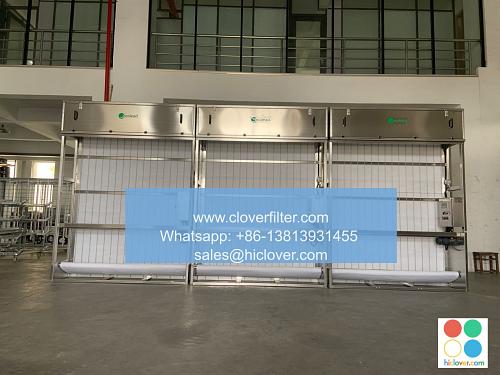Air Filter Sizing: A Guide for Optimal Performance

Air filter sizing is a crucial aspect of ensuring optimal performance in various applications, including industrial air filtration, commercial HVAC systems, and residential air purification. Properly sizing an air filter can significantly impact the efficiency and effectiveness of the system, as well as the overall indoor air quality. In this article, we will delve into the world of air filter sizing, exploring the key factors to consider and the benefits of optimal sizing.
Understanding Air Filter Sizing
Air filter sizing refers to the process of selecting an air filter that is appropriately sized for a specific application. This involves considering various factors, including the airflow rate, filter efficiency, and pressure drop. A correctly sized air filter will ensure that the system operates within the designed parameters, providing optimal air filtration performance and minimizing energy consumption.
Key Factors to Consider
When sizing an air filter, several key factors must be taken into account, including:
* Airflow rate: The volume of air that needs to be filtered, typically measured in cubic feet per minute (CFM) or cubic meters per hour (m3/h).
* Filter efficiency: The ability of the air filter to capture particles of a specific size, usually measured in terms of MERV (Minimum Efficiency Reporting Value) or HEPA (High Efficiency Particulate Air) ratings.
* Pressure drop: The resistance to airflow caused by the air filter, which can impact the overall system performance and energy consumption.
* Filter media: The type of material used to construct the air filter, such as fiberglass, pleated media, or activated carbon.
Application Areas
Air filter sizing is critical in various application areas, including:
* Industrial air filtration: Manufacturing facilities, power plants, and other industrial settings require high-performance air filters to maintain optimal air quality and process control.
* Commercial HVAC systems: Office buildings, hospitals, and other commercial establishments rely on properly sized air filters to provide a healthy and comfortable indoor environment.
* Residential air purification: Homeowners can benefit from optimal air filter sizing to improve indoor air quality and reduce allergies and respiratory issues.
Benefits of Optimal Sizing
Properly sizing an air filter can have numerous benefits, including:
* Improved air filtration performance: Optimal sizing ensures that the air filter can capture particles effectively, providing cleaner air and reducing the risk of airborne contaminants.
* Increased energy efficiency: A correctly sized air filter can minimize pressure drop and reduce energy consumption, leading to cost savings and a reduced carbon footprint.
* Extended filter life: Optimal sizing can help extend the life of the air filter, reducing maintenance costs and waste generation.
Conclusion
In conclusion, air filter sizing is a vital aspect of ensuring optimal performance in various applications. By considering key factors such as airflow rate, filter efficiency, and pressure drop, and understanding the benefits of optimal sizing, individuals can make informed decisions when selecting an air filter. Whether it’s for industrial air filtration, commercial HVAC systems, or residential air purification, proper air filter sizing is essential for maintaining optimal air quality and system performance. You haven’t asked a question or provided any context. Please ask a question or provide more information so I can assist you.

